
views
Monitoring Your Rabbit’s Condition
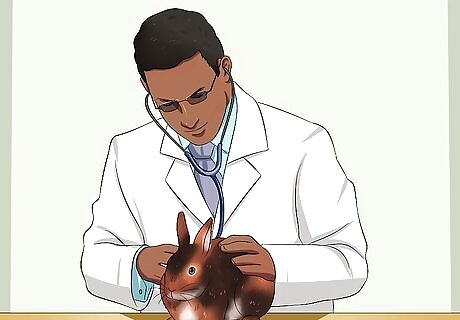
Bring your rabbit in for regular checkups. Your rabbit may develop health problems which offer no outward signs, but will be obvious to a vet when looking at routine bloodwork results or examining your rabbit’s physique. Elevated enzymes or liver disease might be caught early if you continue to take your rabbit in for regular checkups. From the time a rabbit is four years old, he or she should see the vet at least once each year. When the rabbit surpasses seven years of age, take him or her to get bloodwork done at least twice each year. If the vet your rabbit sees in old age is not the same as the vet who treated your rabbit when they were younger, contact the vet who saw the rabbit when they were younger in order to obtain baseline bloodwork values. You might want to provide your vet with a urine sample for urinalysis. To do so, place the rabbit in a small cage with a metal mesh or grate floor. Place the cage above a plastic tray to collect the urine when the rabbit passes it.
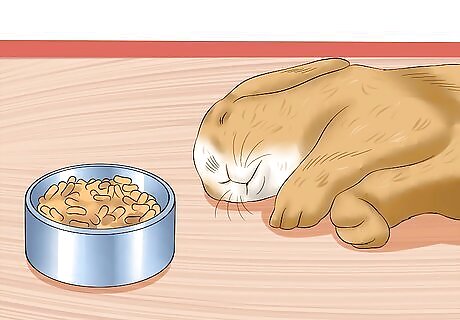
Recognize when your rabbit is aging. The average lifespan of a rabbit is between 7 - 10 years, but rabbits have been known to live up to 18 years. Lifespans vary from rabbit to rabbit. No matter how old your rabbit gets, you’ll start to notice signs of aging after around four years old. Keep an eye out for these potential changes in your bunny: Small white hairs might develop behind its ears. It might sleep more than it used to. Its coat might become more coarse, or thinner and finer. Mobility might be reduced. Weight might go up or down, and appetite might decrease.
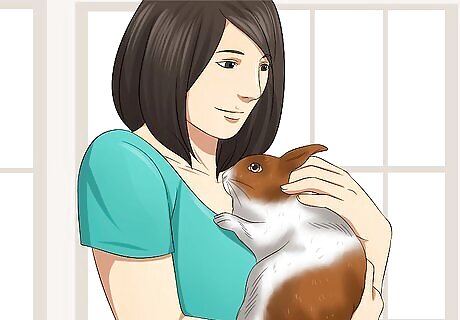
Provide a healthy emotional life for your rabbit. Play with your bunny frequently, pet it gently and lovingly, and keep it happy in its old age. These activities will keep it happy. Your bunny won’t always be happy, though; if it is not, be cognizant and respectful of your rabbit’s inner emotional life. If you kept two or more rabbits and one passes away, allow the other rabbit(s) to grieve. A rabbit who lived with a companion for many years should be allowed to say goodbye when and its companion goes to bunny heaven When the bunny loses interest in the body, remove it for burial or cremation. Give extra attention and affection to the remaining bunny for several days as it grieves. While a bunny who has passed away can never be replaced, consider getting a new friend for your aging bunny. Having a playmate to interact with can keep your pet active, curious, and engaged when you’re not around.
Ensuring Your Bunny Doesn’t Have Potty Problems
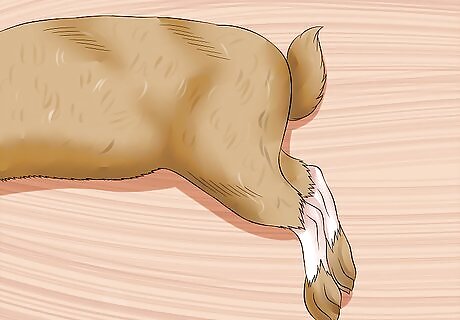
Pay attention to bunny’s potty time. Older rabbits might not be able to curve their spine properly, and could end up soiling themselves during urination. Check its fur, especially its back legs, for wetness or fur clumps due to urine. If the problem is chronic, your bunny can develop urine scald, a condition which causes the rabbit to suffer from inflamed or irritated skin and fur loss. If your pet develops urine scald, ask your vet for an appropriate treatment which you can apply to the inflamed area. There are several available, but they generally work to relieve pain and fight infections. Ensure your cream, powder, or ointment is zinc-free.
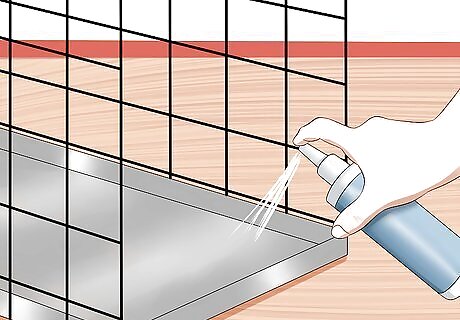
Check the cage for a foul smell indicative of urine or feces. Keep your cage clean and ensure your cage’s top layer of bedding works to wick away moisture from the surface. Check your pet’s bottom regularly. If you see an accumulation of fecal matter or urine stains on its hindquarters or around its anus, give it a bath and contact your vet about the situation.

Ensure your rabbit is getting the right amount of calcium. If your rabbit has thick or pasty urine, it might need a reduction in its calcium intake. Identify sources of calcium in its diet and find an appropriate substitute for the other nutrients which might be lost when removing the source of excess calcium. For instance, if you feed your rabbit a helping of food pellets with each meal and they contain 100% of your rabbit’s daily value of calcium, reduce the pellet serving by half, and find another type of pellet which is calcium-free to make up for the other half of your rabbit’s calories in each meal.
Keeping Your Rabbit Mobile
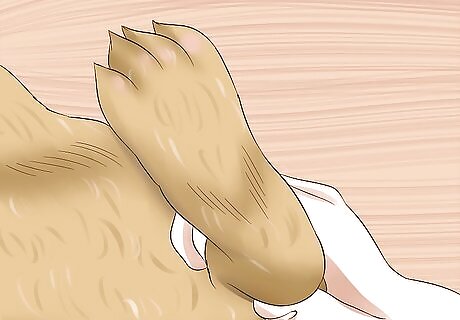
Check the bottoms of bunny’s feet regularly. They might develop sores or cuts which can be come painful and infected. In this case, your vet can bandage or prescribe medication to ease the pain in bunny’s feet. Check your bunny’s nails. As your bunny ages, its nails might start to curl outward and become thicker. Keep your bunny’s nails trimmed and neat, or they might tear and cause bunny pain. You might also notice small callouses beginning to develop on the bunny’s nail bed.

Encourage your bunny to move about. Give it time in a safe, enclosed area to explore and hop about freely. Movement and exercise will keep it spry. However, in its old age, your bunny might not want to hop around as much. In this case, do not force it to do so. Bunny may move around less frequently or with greater difficulty. If you see this, your bunny might have developed arthritis or joint inflammation, and should be taken to a vet. Consider adding more litter boxes to your rabbit hutch or cage if your rabbit has difficulty moving. You might also want to lower the sides of the litter box or provide a ramp on a gentle incline. Change your bunny’s litter box at least once a week.
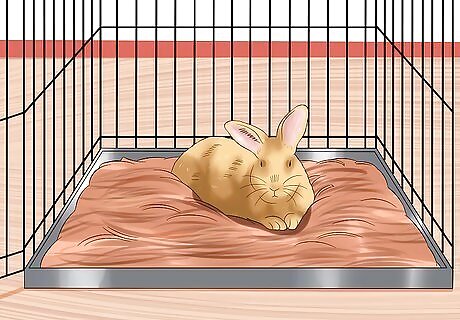
Keep your bunny on soft surfaces like hay, grass, or earth. Avoid setting your rabbit loose on hardwood floors or wire cages. Hard surfaces can exacerbate pain in your rabbit’s legs and feet. Keep soft bedding on the floor of your rabbit hutch or cage. Pinewood shavings are typically considered the best option. Change the bedding regularly to ensure it does not become damp.
Feeding Your Bunny Properly
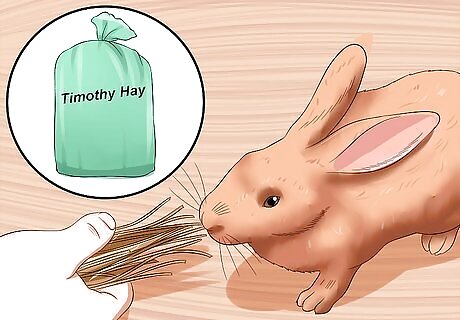
Encourage healthy eating. Offer your rabbit tasty treats that are also high in nutrients such as spinach, carrots, lettuce, rabbit pellets, or timothy hay. These foods will help the rabbit keep healthy in its old age. Timothy hay can be fed in unlimited quantities; veggies should be fed at a rate of two cups per six pounds of body weight. Be sure that your rabbit is drinking and eating several times a day. Make sure that its water bowl/bottle is never empty.

Feed your bunny appropriately for its weight. Monitor changes in your bunny’s weight and adjust its diet accordingly. Older rabbits often need food pellets, which are available at local pet stores. These will give your bunny a calorie boost to make up for the loss of bone mass and muscle. Pellets of timothy hay are best, though alfalfa pellets might be needed if your rabbit is having trouble keeping on weight. Pellets should be administered at a rate of ¼ cup per six pounds of bunny weight. Alternatively, if your bunny has put on excess pounds in its old age, work to reduce its weight. Like humans, bunnies can develop arthritis, heart disease, and other health problems related to excess weight. Ask your doctor what your bunny’s target weight should be and adjust its diet as necessary.
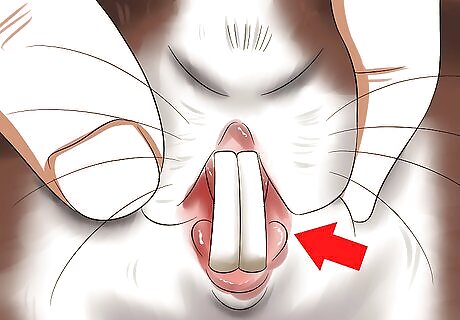
Look for malocclusions. The development of molar malocclusions – misalignments of the jaw -- are common in smaller breeds like lops. If you see your bunny has difficulty eating, drools when eating, moves its mouth in seeming discomfort, or paws at its face, you should bring your bunny to the vet. Other signs of molar malocclusions include a bunny who takes food but then spits it out, a bunny who has a very wet face after eating, or a bunny who turns down food regularly. To feed a bunny with malocclusions, offer small chunks of fruit and veggies, and cut up your bunny’s greens. Smaller pieces are easier to chew. Check your bunny’s teeth for abnormalities monthly. Problems with both incisors and molars might visible. Your rabbit’s teeth should be straight and the gums should have a healthy pink color.
Monitoring Your Bunny’s Health
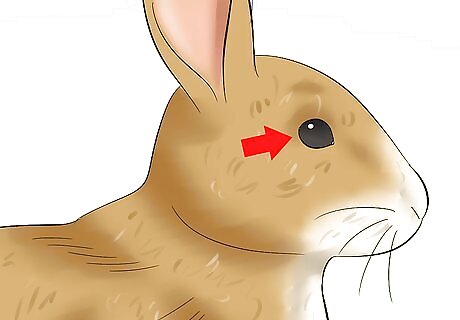
Check your bunny’s eyes. Bunny’s eyes should be colorful, bright, and alert with no signs of discharge. If you see significant streaks at the corners of the eyes or tears, or your bunny cannot open and close their eyes easily, your bunny might have any number of eye issues, from cataracts to eye infections. If this is the case, take your bunny to a vet immediately. Older bunnies may develop cataracts. Cataracts are small imperfections which develop over the lens of the eye, making vision difficult. If you notice your bunny is having trouble locating things, seems unsure where to go in new surroundings, or demonstrates a sensitivity to light, they might have cataracts. While they are not painful and do not require treatment, cataracts should be monitored.
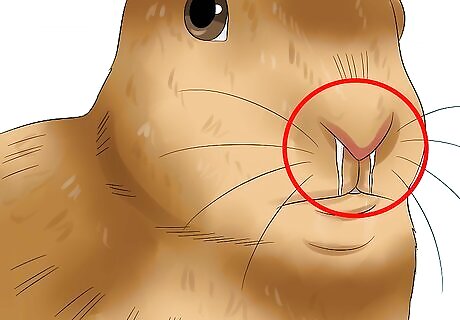
Check your bunny’s nose. Take your bunny to the vet if you see yellow or green discharge around bunny’s nose. Your bunny’s nose should be fresh and clean. If your rabbit sneezes or sniffles often, they might have contracted an illness. Monitor your pet for repeated sneezing or prolonged sniffling sessions and report them to a vet if they persist.
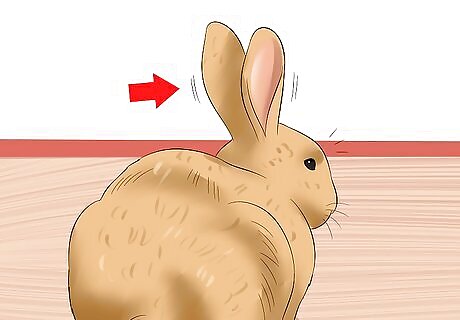
Check your bunny’s hearing. Older bunnies, like older people, might lose their hearing. Approach a deaf or hearing-impaired rabbit slowly from the front so it can see you. Approaching another way, especially from behind, will startle your bunny. Over the long term, this can lead to increased stress levels.
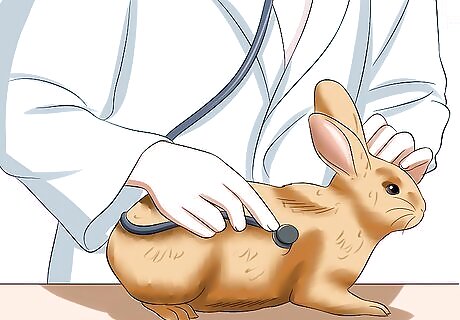
Check your bunny’s heart and lungs. Listen for clear, normal breathing. Use a stethoscope to listen to bunny’s heart. Listening to bunny’s heart and lungs when he or she is young will give a baseline against which to recognize and measure irregular heartbeats and breathing when they are older. Checking your rabbit's heart rate and breathing is an important part of ensuring good bunny health at every age.



















Comments
0 comment